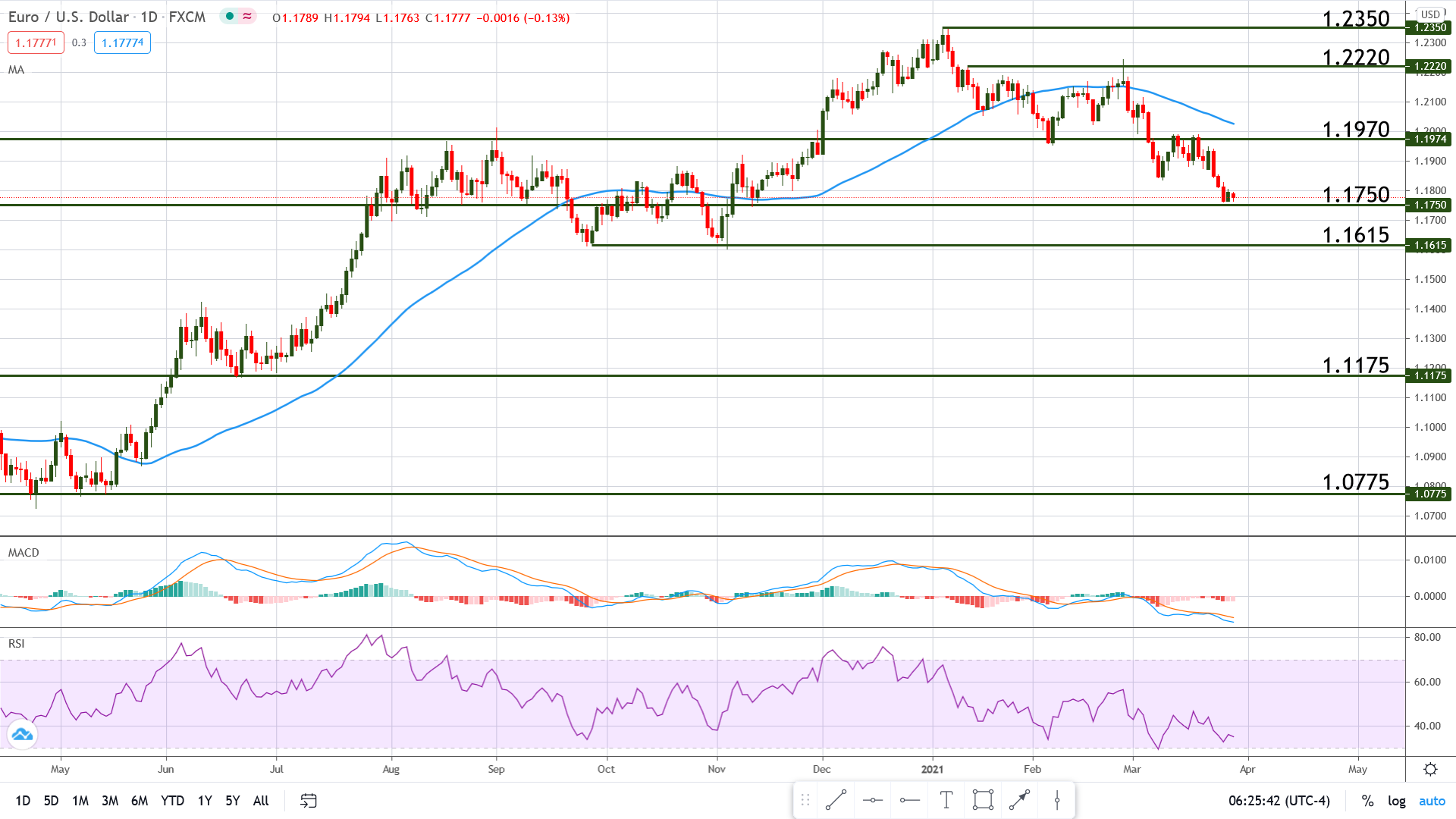The Dollar Looks Strong Ahead Of The March NFP
The Greenback Holds Firm Ahead of U.S. Non-Farm Employment Report
by Bogdan Giulvezan
On Monday, the European single currency dipped below 1.1800 as tougher COVID-19 numbers hit the economy and hampered the prospects of economic recovery. The Euro is now headed for its biggest descent since the middle of 2019 and a big part is being played by the faltering of the EU’s vaccination programme.
The US Dollar remained firm against most of its counterparts, with the DXY trading near 92.800, upbeat vaccination numbers, as well as good economic data coming out of the United States. This week’s main event will be the release of the U.S. jobs data, for which the forecast is very positive, but forecasts are not always right and a miss would probably bring more downside pressure than usual to the greenback.
Key Events for the Week Ahead
The Conference Board Inc. will release the CB Consumer Confidence survey Tuesday, March 30 at 2:00 pm GMT. It’s a composite index derived from the opinions of about 3,000 US households regarding the current and future levels of economic conditions, employment, and more. Because consumer confidence is a leading indicator of consumer spending, usually, numbers above the anticipated 96.0 strengthen the greenback.
Wednesday, March 31 at 12:15 pm GMT we take an early look at the US employment situation with the release of the ADP Non-Farm Employment Change. This report is put together by Automatic Data Processing, Inc. and tries to mimic the government-issued data that comes out two days later. The forecast is 557K, a hefty increase from the previous 117K but the impact is lower than the one of the NFP.
And speaking of the Non-Farm Payrolls (NFP) report, its release is scheduled for Friday, April 2 at 12:30 pm GMT and the expected change is 633K, while the previous change was 379K. Because employed people tend to spend more than unemployed ones and consumer spending is a vital part of the economy, the impact of the NFP is substantial more often than not, and numbers above forecast show economic expansion, thus strengthening the US Dollar.
Chart Analysis – EUR/USD
Since reaching the top at 1.2350, the pair has been under the control of the bears and has descended below the 50 periods Moving Average on the Daily chart seen below. This behaviour is likely to continue, at least until the Relative Strength Index enters oversold territory, but as we can see, price is approaching the support at 1.1750, which will be an important test for US Dollar strength.
The levels to watch this week are 1.1970 – 1.2000 as resistance (price reacted several times to this zone) and 1.1615 – 1.1600 as support (assuming that 1.1750 will be broken). The medium-term bias is bearish as long as the pair is trading below 1.1970 and the 50 periods Moving Average but things could change very quickly if the NFP report brings us any surprises, thus make sure you pay attention to it.
